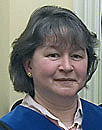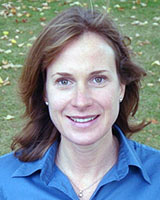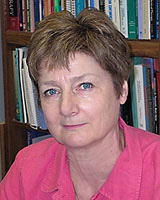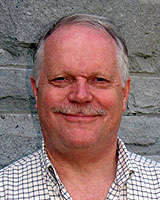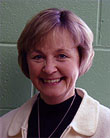Introduction
Canada has experienced a significant trend towards urbanization. The number of Canadians living in rural areas is in steady decline. Even so, one-third of all Canadians still live in rural and remote areas. While this represents a significant proportion of the country, there is a widening dearth of literature specific to rural issues, most notably with health issues1,2. In conjunction to this, professional training programs are increasingly gearing their students toward work solely in an urban environment - not a rural one. Thus, the resultant makeup of the Canadian professional shows they are increasingly growing up in an urban environment, are trained in an urban environment, and have little knowledge or experience working or living in a rural environment3,4.
There has been a strong push by national and local leaders to develop innovative ways of delivering services to smaller communities to improve the wellbeing of people in those communities2,3,5,6. While many countries have offered incentives or have attempted to control practice locations in order to increase the supply of professionals in rural settings, this approach does not necessarily result in increased recruitment, retention, or quality of care for rural residents3,5. Providing educational opportunities to increase exposure, experience, and socialization in rural settings may be a better long-term strategy for increasing service providers' desire and confidence to practice in these settings7-11. Such educational opportunities would require transformation of professional program curricula.
When professionals enter rural environments they are often viewed as 'foreign' to the community. This is especially true if they haven't had any work experience in rural communities. They may not readily possess the unique skills necessary to effectively interact with and integrate into these communities4. Attempting to practice in a rural setting may prove difficult in terms of maintaining professional competence and confidence. They may meet the common rural challenges of reduced availability of resources and information, and collegial advice may not be as readily available as in cities.
Many professionals do not have the collegial support of members of their own profession in rural communities, nor do they necessarily have the support of members of other professions, which is often found in urban settings. As a result, professionals of varied disciplines must learn to collaborate with others to solve problems beyond their own scopes of practice. Issues of health and wellbeing go far beyond the scope and practice of health professionals to include counsellors, teachers, and ministers, among others. The interprofessional (IP) format of the course was based on the premise that professionals in rural practice can provide one another the professional and personal support to facilitate integration into a rural community. Interprofessional education (IPE) is defined as occasions when two or more professions learn with, from, and about each other to improve collaboration and quality of care12.
A literature search identified several programs internationally that aim to assist learners preparing to practice in rural and remote healthcare settings7-10,13-19. None of these programs, however, offered an IP experience to a group of learners that reflects the reality of professional representation typical of Canadian rural settings, nor did they focus on the preparation of learners to actually live in rural settings. Therefore, the 'Professionals in Rural Practice' course20 was developed with this in mind and piloted in September 2005, with a second iteration in September 2006.
In hindsight, viewing this IPE initiative from inception through to completion of the second year, two important elements emerge. The first is that the IPE initiative developed with little support from the institution. Second, tracking the development of the IPE course provided the groundwork for a valuable longitudinal investigation of community-based action research. This article will examine how the Professionals in Rural Practice course became valuable as a resource for both IPE pedagogy and action research, especially community-based research. This article highlights some of the positive implications for a more robust training of future professionals, along with some of the roadblocks experienced.
Methods
Community based action research
Community-based action research is about people working consensually and productively in an attempt to improve the situation where the research is taking place for all who participate - researcher, professor, student, community members etc. This type of research fits well with IPE, where educating can be seen as occasions when two or more professions learn with, from, and about each other to improve collaboration and quality of care12 through IP training, with the basic tenet of action research - caring. The following points illustrate different approaches to inquiry that hold caring at their core:
- Personal interactions and communications as the basis for moral community.
- The major goal of any ethical practice involves transformation.
- Commitment to the overall good of the community.
- Reverence for science that equally balances the human and the environment as working together in harmony.
- Emphasis on interpersonal respect, nurturing, worthiness and justice.
- A belief that those studied are active participants in collaborative research processes21.
Faculty members representing the health sciences, education, and theology came together at Queen's University and held a retreat to discuss contemporary issues surrounding rural professional practice in Canada. The goals of the retreat were to:
- Share what each discipline teaches student learners to prepare them for life in a rural setting.
- Consider how to recruit individuals willing to serve in rural areas.
- Discuss why the notion of cross-disciplinary collaboration or an IP strategy for a Professionals in Rural Practice course might better prepare students for work in a rural setting.
The team continued to meet over a two-year period to develop a plan to address these gaps in the IP education offerings and build on research in this area. Similarities and differences in teaching approaches were discussed, and members of other professions joined the team and provided expertise and advice as needed.
The beginning overarching goals of the course were to examine issues related to the process of integration into practice in rural and remote Canada, and to focus on establishing a sustainable professional practice, where one was able to live within a community and maintain a life outside work.
This IP course, facilitated by an IP team of faculty who live or have lived in rural/remote Canada, aimed to prepare the next generation of theologians, nurses, teachers, physicians, occupational therapists, and physical therapists for rural practice by easing the transition from education focusing on urban practice to rural life.
While there has been much effort devoted to developing pedagogical models that are appropriate and effective for IPE, there is still little evidence to determine which are the most effective in various contexts22,23. The course attempted to shift the type of learning experiences to one where learners gain knowledge of and build respect for the roles of other professions, in order to support the development of the collaborative skills necessary for rural practice, such as communication, shared decision-making, and conflict resolution. Students must be exposed to authentic issues and opportunities to have 'real' experiences. From these, appropriate reflection can occur22. This shift in learning develops the IP nature of the course while simultaneously acting as the data for the research. Action research, much like IP education, sustains the processes and contexts that allow participants to collectively shed light on their problems and strategize new ways of envisioning their situations21.
The duration of the course was 8 weeks of three-hour classes, as well as a 48 hour weekend field experience in a rural community. Based on IPE literature22-24, interactive and experiential teaching strategies were used throughout the course, including small IP group activities; guest speakers; interviews with rural professionals and rural community members; a two-day excursion to a rural community; interactive lectures; and class discussions. The team of instructors was attentive to teaching and learning methods that were appropriate for all participating disciplines, in order to provide an inclusive and impartial learning context. Course evaluation of student performance included critical analysis of a videotaped interview; an IP group presentation on an issue related to rural community life; a paper relating to a rural issue of personal interest; and, for students at the graduate level, a journal assignment.
Evaluation methods
The evaluation of this course included a mixed methods approach in order to enhance the breadth and depth of the study, and to enable method triangulation to ensure validity. Participation in the study was voluntary. Following the completion of each iteration of the course a survey that included both open- and closed-ended questions was distributed to learners to assess: (i) the learners' perceptions of and attitudes toward professional roles and identities; (ii) the importance of IP collaboration; (iii) learners' likelihood of living in a rural setting; and (iv) learners' opinions of the course. The closed-ended questions were extracted and adapted from the Interdisciplinary Education Perception Scale, designed and validated by Luecht and colleagues25.
Following each of the two iterations of the course, a focus group interview was conducted with an IP group of student volunteers using in-depth follow-up questions on comments made in the survey. At least one learner from each of the disciplines represented in the course participated in these interviews. Volunteer participants were recruited by asking interested members of the class to submit their email addresses; each participant was asked for signed consent. A focus group was also conducted with the IP instructor team between the two iterations of the course.
Open-ended survey questions and interviews were transcribed verbatim and a content analysis of these data was undertaken. To ensure reliability, two researchers worked independently on the chosen data set to identify codes and themes for each question.
Results
A ceiling effect was noted for the closed-ended survey items that evaluated learner perceptions and attitudes toward professional roles, identities and IP collaboration that might be explained by students' self-selecting for the IP course. As a result, this article will report only on the demographic data collected from the surveys for the two-year period, and will focus on the analysis of the focus group findings for both years, along with changes made to the course between these iterations, based on student feedback.
Thirty-one students participated in the first offering of the course and 34 in the second. The student groups were a mix from the disciplines of theology, nursing, education, medicine, occupational therapy and physiotherapy.
While students were generally enthusiastic about their experience there were some suggestions for improvement, mainly regarding course organization. Some suggestions posed unique IP pedagogical issues specific to life inside an academic structure, such as course expectations, assessment/evaluation, and use of language.
The need for clear guidelines became apparent in the first year of the IP environment. Because students from each discipline had experienced different evaluation and assessment methods, there was some confusion among students about the types of assignments used in this course, and also different expectations for these assignments.
...we weren't really sure what to do...all the groups came up with very, very different responses to the instructions that we were given.
Students were also concerned that styles of expression and grading differed from discipline to discipline.
... we were feeling quite concerned about who would end up marking this project or paper...and how things were marked differently between education, theology, physio, OT, nursing and medicine...so if I am used to writing a theological paper and a nursing professor grabs it to read, is it going to get evaluated fairly?
Based on the feedback from the students, this issue was addressed part way through the first iteration of the course, and each paper was marked by a professor from the same discipline as the student, as well as by the course marker. In the second year, clearer guidelines were provided for the students from the beginning of the course.
Students in the first year recommended that the weekend field experience in a rural community should be scheduled earlier in the course to allow learners of various professions to develop relationships sooner and to learn from each other about their disciplines.
...having the weekend early...because you bond so much...you get to know people a lot better and I think that would have really helped the following lectures because we would be that much more comfortable with our classmates and that much more willing to go and sit with other people... know your profs better.
Students felt that the late scheduling of the trip decreased the amount of the time available to complete their group projects, which began during the field trip. This feedback resulted in moving the field trip from the fifth to the third week during the second iteration of the course.
When speaking about the evaluation of learning for the course, students commented that all aspects of the course would be better served if evaluation reflected the approach to learning. Traditional assignments such as term papers were deemed inconsistent with a course that emphasized IP collaboration, participation, discussion, and experiential learning.
Because the occupational therapy and physical therapy programs were at the graduate level, these students were expected to complete one extra assignment for the course. They kept a reflective journal with entries for each week of the course. The journals were submitted for evaluation at the end of the course. Some students from the other disciplines thought they would benefit from a journaling assignment experience too, and that it could replace the written paper.
...that's a great idea for everyone! I would have loved that...forced to sit down and think about what you got out of the weekend and classes.
Students in both years valued the small-group IP learning in the course. In fact, during the focus group following the second year, students said that they would benefit from having even more of these activities during the weekly class meetings, and less large-group discussion. They felt that by increasing this approach to learning, better discussion would be promoted and greater knowledge of other professions developed. It would also provide shared time to work on projects.
It was clear that the field trip was regarded as a meaningful learning experience to students in both years. As part of the field trip, learners participated in panel discussions arranged by a diverse group of community leaders that included the following topics: the environment, community members, medical services, education, First Nations, and municipal government. Community leaders also joined the students and instructors during mealtimes and activities, and a community elder led students on walking tours of the town, providing an opportunity to break down barriers to social discourse with the learners.
Students valued the opportunity to gain knowledge of other professions, and also to develop and practice specific collaborative skills for use in rural or other settings, so achieving their goal of collaborative practice. However, many found themselves unprepared to learn in interactive group settings.
I felt we were kind of thrown into the group presentation [project] and that a large part of that was you know you're working together and yet there was really no explicit skill building around that, you know nobody spoke about that per se.
Moreover, students in the first year felt that pedagogical emphasis within the course favoured the health sciences.
I think it would be nice to have more equal representation throughout the lectures of all the faculties [instructors and guest speakers] that were involved ....
For instance, theology and education students often noticed that community members were referred to as 'patients' instead of 'people'. From a community-based action research perspective, as from an IPE perspective, this indicates some aspects of professional socialization not always apparent within and among professions. In both instances, new professional socialization requires the perspective of others to help reveal issues as they arise. Through such an experience one student realized the need to develop a shared language, while also recognizing that this would be challenging.
One of the greatest challenges in both years was structural and institutional in nature. The university system seems unable or unwilling to support IPE. Consequently, the IP team of instructors volunteered their time. While many of the instructors were present for class even when it was not their night to facilitate, it was a challenge for all instructors to be available every week and for the field trip.
Effort was made in the second year to address this by having the education instructor, who played a behind-the-scenes planning role the first year, more involved in the class discussion. Rather than individual instructors leading class presentations and discussions, the instructors facilitated in IP dyads. Independent efforts of the instructors did result in minimal funding on a year to year basis.
Discussion
The implementation of this course highlighted many pedagogical issues unique to an IP setting and to community action based research through surveys, focus groups, and student reflection, especially within an academic institution. In the first year, special attention to issues of course expectations and evaluation in an IPE setting became more obvious and were used to inform planning for the subsequent year. Also in the first year, the importance of attention to the use of language in an IP setting became more apparent, along with the need for ongoing discussion to develop a shared understanding and language.
In the second year the value of the increased knowledge of other disciplines and strategies to promote IP collaboration was made apparent; however, it was suggested that explicit opportunities to develop and practice skills necessary for IP collaboration through small IP group activities would enhance the experience. Other pedagogical issues still require fine tuning, such as developing evaluation methods appropriate for the teaching and learning approach of this course. Instructors continue to discuss the best practice from each of their disciplines along with issues unique to IP teaching and learning, in order to improve the existing model and to respond to the emerging and changing needs of new groups of students.
The biggest obstacles to the sustainability of this course are yet to be resolved. Most seem to relate to the university's central administration. For IP courses, there is currently no mechanism in place to financially support course costs or to pay contributing faculty from outside the school in which the course is registered. As a result, this IP team of faculty volunteered their teaching time and also sought independent sources of funding for course costs. Even with these obstacles, these faculty members were willing to continue their involvement in the course because they believe it provides a unique and valuable opportunity for students and themselves for professional development and IP networking with likeminded colleagues. This group of faculty will continue to work toward changes at the administration level to promote sustainability for this course and other potential IP offerings.
Conclusion
This study demonstrates the value of community-based action research for developing IPE for rural environments. Participation of an IP group of faculty, students, rural professionals and residents in the development and delivery of this course, using cycles of reflection and implementation, allowed relevant pedagogical issues to be revealed and addressed.
Through continued correspondence with students following the completion of the course it was learned that some longer term, course-related changes had occurred. One theology student decided to apply for the bachelor of education program to become a teacher; a nursing student chose to do her eight-week practice placement in a northern community; and an education student decided to apply for and then accept a teaching position in a rural community. This outcome suggests the potential value of a longitudinal study into the professional development of students subsequent to their involvement in this course.
Acknowledgement
The authors acknowledge the funding of Bridge Street United Church Foundation Queen's University Interprofessional Patient-centred Education Direction (QUIPPED), Faculty of Health Sciences Education Fund.
References
1. Kulig JC, Minore B, Stewart NJ. Capacity building in rural health research: a Canadian perspective. Rural Remote Health 4: 274. (online) 2004. Available: www.rrh.org.au (Accessed 15 January 2008).
2. Pong RW. Rural health research in Canada: at the crossroads. Australian Journal of Rural Health 2000; 8: 261-265.
3. Barer M, Stoddart G. Improving access to needed medical services in rural and remote Canadian Communities. (Online) 1999. Available from: http://www.srpc.ca/librarydocs/BarSto99.htm (Accessed 20 July 2007).
4. Harper H. 'There is no way to prepare for this': teaching in First Nations schools in Northern Ontario - issues and concerns. Canadian Journal of Native Education 2000; 24: 144-158.
5. Romanow RJ. Building our values: the future of health care in Canada - final report. Ottawa: Commission on the Future of Health Care in Canada. (Online) 2002. Available: http://www.hc-sc.gc.ca/english/pdf/romanow/pdfs/HCC_Chapter_7.pdf Accessed 19 February 2008).
6. Henderson J. Issues in rural health care planning. Canadian Nurse 1982; 78: 30-33.
7. Geller ZD, Rhyne RL, Hansbarger LC, Borrego ME, VanLeit BJ, Scalett I. Interdisciplinary health professional education in rural New Mexico: a 10 year experience. Learning in Health and Social Care 2002; 1: 22-46.
8. Racher FE. An interdisciplinary rural health course: opportunities and challenges. Nurse Education Today 2002; 22: 387-92.
9. Hayward KS, Powell LT, McRoberts J. Changes in student perceptions of interdisciplinary practice in the rural setting. Journal of Allied Health 1996; 25: 315-327.
10. LaSala KB, Hopper SK, Rissmeyer DJ, Shipe DPS. Rural health care and interdisciplinary education. Nursing and Health Care Perspectives 1997; 18: 292-298.
11. Solomon P, Salvatori P, Berry S. Perceptions of important retention and recruitment factors by therapists in Northwestern Ontario. Journal of Rural Health 2001; 17: 278-285.
12. Centre for the Advancement of Interprofessional Education (CAIPE). Interprofessional education - a definition. (Online) 2007. Available: http://www.caipe.org.uk/about-us/defining-ipe/ (Accessed 19 February 2008).
13. Gordon PR, Carlson L, Chessman A, Kundrat ML, Morahan PS, Headrick LA. A multisite collaborative for the development of interdisciplinary education in continuous improvement for health professions. Academic Medicine 1996; 71: 973-978.
14. Charles G, Bainbridge L, Copeman-Stewart K, Tiffin S, Kassam R. The interprofessional program of British Columbia (IRPbc). Journal of Interprofessional Care 2006; 20: 40-50.
15. Fertman C, Dorson S, Mazzaco G, Reitz S. Challenges of preparing allied health professionals for interdisciplinary practice in rural areas. Journal of Allied Health 2005; 34: 163-168.
16. Paterson M, McColl M, Paterson J. Preparing allied health students for fieldwork in small communities. Australian Journal of Rural Health 2004; 12: 32-33.
17. Stageman JH, Bowman RC, Harrison JD. An accelerated rural training program. Journal of the American Board of Family Practice 2003; 16: 124-130.
18. McNair R, Brown R, Stone N, Sims J. Rural interprofessional education: promoting teamwork in primary health care education and practice. Australian Journal of Rural Health 2001; 9(Suppl): S19-S26.
19. Crump WJ, Bersch RB. A practice-based rural health fellowship: an innovative approach to support for rural care. Texas Medicine 1999; 95(11) 72-77.
20. Medves J, Paterson P, Young JH, McAndrews B, Bowes D, Smith E, et al. Preparing professionals from a wide range of disciplines for life and work in rural and small communities. Australian Journal of Rural Health 2006; 14: 225-226.
21. Stringer E. Action research. Thousand Oaks, CA: Sage; 2007.
22. Oandasan I, Reeves S. Key elements for interprofessional education. Part 1: The learner, the educator and the learning context. Journal of Interprofessional Care 2005; 19(Suppl 1): 21-38.
23. D'Eon M. A blueprint for interprofessional learning. Journal of Interprofessional Care 2005; 19(Suppl1): 49-59.
24. Oandasan I, Reeves S. Key elements of interprofessional education. Part 2: Factors, processes and outcomes. Journal of Interprofessional Care 2005; 19(Suppl 1): 39-48.
25. Luecht RM, Madsen MK, Taugher MP, Petterson BJ. Assessing professional perceptions: design and validation of an interdisciplinary education perception scale. Journal of Allied Health 1990; 19(2): 181-191.
